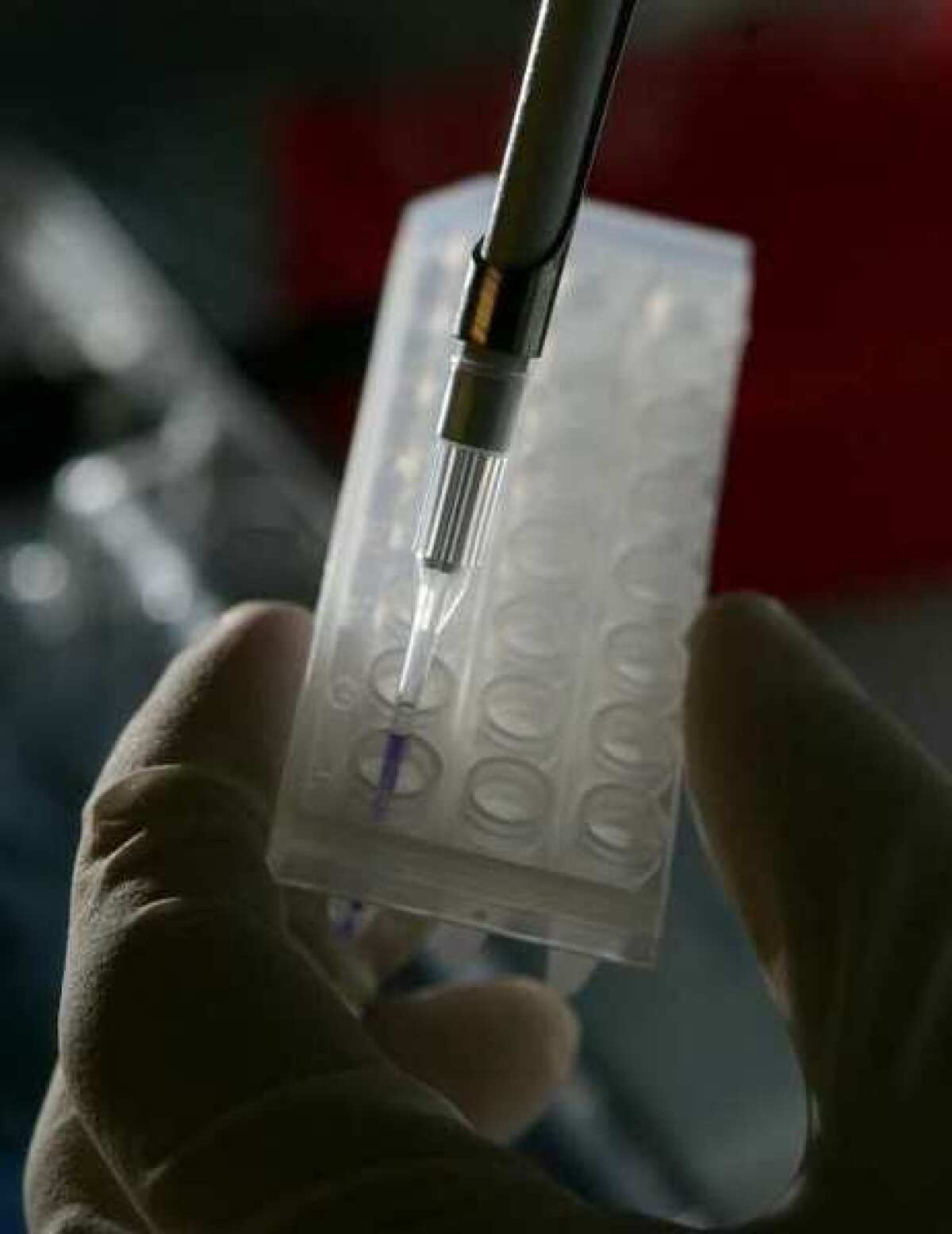New human genome research aids understanding of disease

- Share via
In the decade since the human genome was published, scientists have been frustrated by their inability to figure out exactly how variations in genes promote disease.
But the information assembled by ENCODE research -- which shows that regions of the genome once thought to be junk are actually stuffed with DNA “switches” that help direct genes in their work -- may help change that, scientists involved with the collaboration said Wednesday.
“Now that we have the switches, we can start to understand why a combination of DNA variants might increase the chances of a particular disease -- we can see which switch is malfunctioning and why,” said Harvard Medical School and Broad Institute pathologist Dr. Bradley Bernstein.
Past efforts to figure out the puzzle of how DNA in the genome caused disease had focused on hundreds of genome-wide association studies, which screened genomes of people with particular medical conditions to determine DNA variants linked to those diseases, said University of Washington genome scientist Dr. John Stamatoyannopoulos, lead author of a study examining the connection between gene regulation and disease published Wednesday in the journal Science.
But “the data coming from those studies has been less clear than most people would have hoped,” failing to identify key genes driving most disorders, he said.
There turned out to be hundreds or thousands of variants involved in common diseases, and it was unclear what each one did. Only about 5% of the shared variants were in sections of DNA forming the template for genes.
“We were missing too much information to put the story together,” said Eric Schadt, a computational biologist at the Mount Sinai School of Medicine in New York.
Scientists working on the ENCODE project, which sought to delve deeper into DNA function, were able to show that there are millions of DNA segments in the genome that are involved in turning the 20,000 genes in the human genome on and off, Stamatoyannopoulos said. The 100,000 to 200,000 of these gene regulators that are activated in a cell determine what kind of cell it is and what function it performs.
Stamatoyannopoulos and his coauthors compared the gene regulation data from ENCODE and other projects with the associations uncovered in genome-wide association studies, looking to see when common variants were located in regulatory regions of the genome.
In many cases, it made sense that the identified regulatory regions were linked to certain diseases. For instance, the team discovered that one variant that had been associated in genome-wide studies with platelet count was actually part of the regulatory DNA that helps control a distant gene involved in platelet production.
“It isn’t just noise,” Stamatoyannopoulos said of the baffling results from earlier studies. “The genome-wide association studies are more rich than people thought. This was the key to unlock them.”
Stamatoyannopoulos’ analysis revealed that some diseases seemed to cluster in groups. The research also pointed toward “what cell types are really doing the damage” in specific disorders, he said. It found, for example, that variants common in people with Crohn’s disease seemed to control elements important in immune cells, which are known to be involved in the disease.
That suggests that researchers could use the same approach to find cell types involved in disorders about which less is known, he added.
The mapping of genetic function isn’t anywhere close to complete. “We know the working parts, but we don’t know how they fit together,” said Bernstein, an ENCODE collaborator who was not involved in the Science study.
But the idea is that this type of analysis should one day help scientists understand how networks of genes and gene regulators work together to drive biology — and how failures in the system lead to disease, Schadt said.
He compared understanding genome function to watching a movie.
In a film, it’s not just individual images that matter; the way and order in which they change over time, the sounds that accompany them, and context are necessary to tell the entire story. Similarly, the “image” projected by the human genome -- the raw list of Ts and A’s and Cs and Gs in our DNA -- is a snapshot of human biology that requires context to really make sense, he said.
“Unless we look at biology as a movie, we don’t get the picture,” said Schadt, who was not involved in the ENCODE collaboration but wrote an article accompanying Stamatoyannopoulos’ study in Science.
The new perspective on genome function could breathe new life into the notion of personalized medicine, in which physicians can analyze a patient’s DNA to tailor effective treatments case by case. “By understanding the mechanisms affected, we can understand how to target our clinical interventions,” Schadt said.
It should also aid the development of more effective drugs, Stamatoyannopoulos said.
eryn.brown@latimes.com







